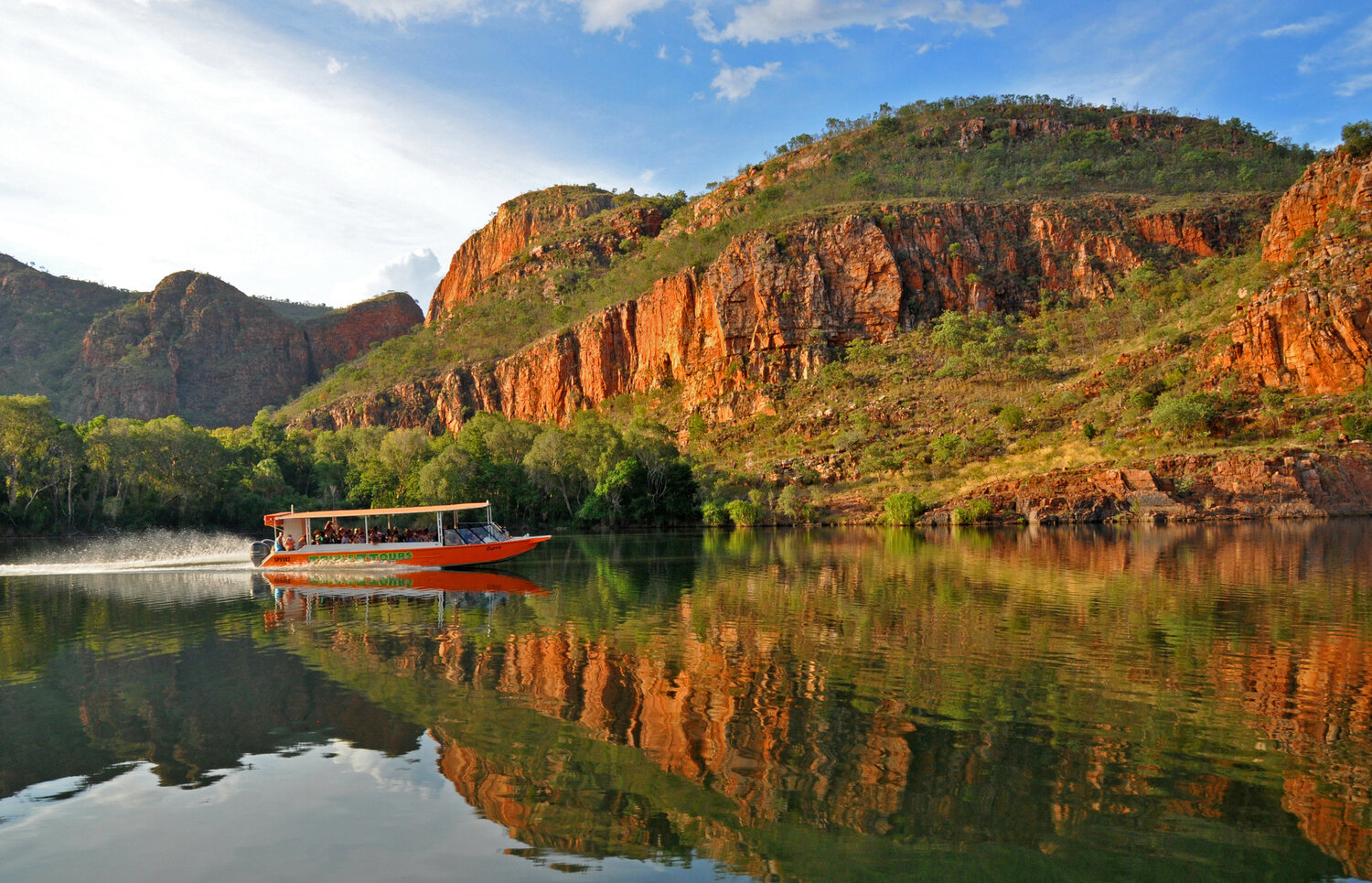Ord River

Nestled within the rugged landscapes of the Kimberley region in Western Australia, the Ord River flows as a lifeline, not only sustaining the diverse ecosystems of the area but also serving as a cultural artery for the indigenous peoples and communities that call this region home. The river contains thirty-five tributaries, the five longest of which are the Bow, Nicholson, Dunham, Panton, and Negri rivers. In this comprehensive exploration, we delve deep into the cultural significance of the Ord River, tracing its historical, spiritual, and socio-economic importance to the people of Kimberley and beyond.
I. Indigenous Connections: Spiritual and Cultural Traditions
For millennia, the Ord River has been central to the spiritual and cultural traditions of the indigenous peoples of the Kimberley region. Known as the Miriuwung and Gajerrong peoples, these traditional custodians have forged a deep connection with the land and waterways, weaving stories, songs, and ceremonies that honor the river’s life-giving powers. From Dreamtime legends that recount the creation of the landscape to seasonal rituals that mark the ebb and flow of the river’s waters, the Ord River is imbued with profound spiritual significance for indigenous communities, serving as a source of identity, resilience, and cultural continuity.
II. Historical Legacies: Explorers, Settlers, and Pioneers
Throughout history, the Ord River has played a pivotal role in shaping the cultural landscape of the Kimberley region, from the early explorations of European settlers to the establishment of pastoral stations and agricultural ventures along its banks. Figures such as Alexander Forrest, who led expeditions through the Kimberley in the 1870s, and the pioneering Durack family, who established the historic Argyle Downs Station, have left indelible marks on the region’s history and heritage. Their interactions with indigenous peoples, the land, and the river itself have contributed to a complex tapestry of cultural exchange and adaptation that continues to resonate in the Kimberley today.
III. Economic Lifeline: Agriculture, Tourism, and Industry
Beyond its cultural and spiritual significance, the Ord River plays a vital role as an economic lifeline for the communities of the Kimberley region. Through the implementation of the Ord River Scheme in the mid-20th century, the river’s waters were harnessed for irrigation, leading to the establishment of agricultural precincts and the cultivation of crops such as cotton, rice, and melons. Additionally, the river’s scenic beauty and recreational opportunities have made it a popular destination for tourism, providing economic opportunities for local businesses and communities. Furthermore, the Ord River supports various industries such as fishing, boating, and eco-tourism, contributing to the region’s economic prosperity and cultural vibrancy.
IV. Environmental Stewardship: Conservation and Sustainability
In recent decades, efforts have been made to protect and preserve the cultural and environmental values of the Ord River and its surrounding landscapes. Conservation initiatives such as the establishment of national parks, wildlife reserves, and indigenous protected areas aim to safeguard critical habitats and biodiversity hotspots, ensuring the long-term health and sustainability of the region. Additionally, sustainable land management practices and community-based conservation projects work to promote environmental awareness and stewardship among residents and visitors alike. By protecting the cultural and natural heritage of the Ord River, we can ensure that future generations have the opportunity to experience its beauty and significance for years to come.
V. Cultural Revitalization: Indigenous Empowerment and Resilience
In recent years, there has been a growing movement towards cultural revitalization and indigenous empowerment within the Kimberley region, driven by a desire to reclaim and celebrate traditional knowledge, languages, and customs. Initiatives such as language revitalization programs, cultural festivals, and land management partnerships aim to strengthen indigenous connections to the land and waterways, fostering a sense of pride, resilience, and self-determination within indigenous communities. Through these efforts, the cultural significance of the Ord is being reaffirmed and celebrated, ensuring that its legacy continues to thrive for generations to come.
Conclusion:
In conclusion, the Ord River holds a profound cultural significance for the indigenous peoples and communities of the Kimberley region, serving as a spiritual, economic, and environmental lifeline that sustains and enriches the lives of all who dwell along its banks. From ancient Dreamtime legends to modern-day conservation efforts, the river embodies the resilience, adaptability, and cultural richness of the Kimberley’s diverse inhabitants. By recognizing and honoring the cultural importance of the Ord, we can ensure that its legacy endures as a source of inspiration, connection, and reverence for generations to come.
Know More about the Ord River.
What are The Religious Places of the Ord River?
When Did The Ord River Basin Become a Focus?
Where is The Ord River Located?
Who Were The Key Historical Figures and Civilizations of The Ord River?
How to Reach Ord River?




